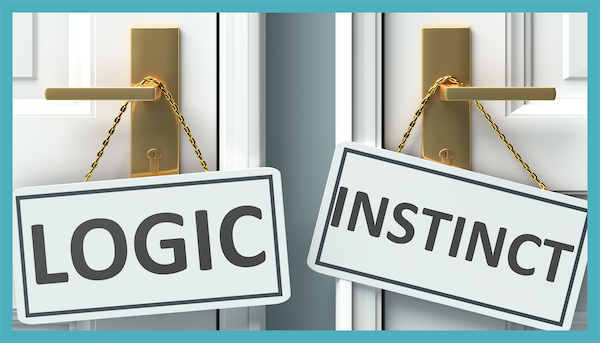 Working to make positive changes in our lives can be challenging for so many reasons. Despite our best efforts, our bodies and brains can work against our efforts to modify our habits or behaviors, often leading us to fall short of our goals. Without a better understanding of what is occurring emotionally and neurologically, these failed attempts at change can become frustrating and discourage us from continuing to try.
Working to make positive changes in our lives can be challenging for so many reasons. Despite our best efforts, our bodies and brains can work against our efforts to modify our habits or behaviors, often leading us to fall short of our goals. Without a better understanding of what is occurring emotionally and neurologically, these failed attempts at change can become frustrating and discourage us from continuing to try.
In my previous blog article, When Saying, “Stop It!” Doesn’t Work, I discussed many ideas for helping clients become more conscious of their instinctual reactions or automatic behaviors and the importance of identifying the origin of such behaviors when there is a desire to make change. In this article, we’ll explore what it takes to change or modify these ingrained reactions once the aforementioned discovery has occurred.
For this discussion, let’s examine the case of Mon E. Baggs, a fictional character based on an actual client case in our MQ Community. Despite making a seven-figure salary annually and communicating a sincere commitment to follow his advisor's financial recommendations, Mr. Bagg’s financial future and retirement goals looked bleak due to his multiple failed attempts to reduce spending. Equipped with some new tools from Money Quotient, Mr. Baggs’ advisor led him through an exploration of his earliest money memories.
Despite our best efforts, our bodies and brains can work against our efforts to modify our habits and behaviors, often leading us to fall short of our goals. Click To TweetWhen asked about his first paid job, Mr. Baggs shared about a paper route he was offered at a very young age that provided him with a sense of independence for the first time. He recalled how excited he felt when riding his bike downtown to pick up his first paycheck and how proud he was to show his parents what he had earned. What he hadn’t expected was that his mother would take his paycheck with a smile and congratulate him for now being able to contribute to the household expenses. The disappointment little Baggs felt that day left a lasting impression, and soon he began to cash and spend his paycheck immediately upon receipt so that his earned money could not be taken from him.
Once Mr. Braggs shared this part of the memory with his advisors, a lightbulb went off in his mind, and his eyes widened. “Oh my gosh! That’s it! That’s why I spend my money down so quickly! All this time, I’ve been acting on the fear that my money will be taken from me if I don’t spend it myself!”
Previously Mr. Bragg was aware of his problematic behavior, but not the origin, which made it difficult to recognize the triggers. Typically a trigger (in this case, income hitting Mr. Bagg’s bank account) will cause a difficult feeling, such as anxiety or fear. Without awareness or intervention, our bodies and minds will move directly into automatic behaviors that have previously reduced these difficult feelings. For Mr. Baggs, the anxiety he felt would dissipate once he had spent his money.
James Clear, in his book, Atomic Habits, refers to this sequence of events as the “habit loop,” which has four steps. It begins with a “cue” or trigger (Mr. Baggs receives income) that initiates a “craving” or a feeling that creates a sense of urgency to take an action (Mr. Baggs felt anxious). The “craving” then motivates a “response” (spending money), which leads to a “reward” (anxiety subsides, and Mr. Baggs feels comfortable).

It’s important to recognize, however, that just because Mr. Baggs now recognizes the origin of this behavior and the trigger that begins his “habit loop,” it does not mean it will be easy for him to respond differently. The anxiety he feels when triggered will still create the feeling of urgency to spend, but his consciousness of what is happening will allow him to choose, in the moment, to respond differently. If Mr. Baggs continues to choose to sit with the anxiety he feels rather than spend his money each time he receives income, eventually, the difficult feeling will become weaker, new neuron pathways in his brain will form, and his automatic reactions will shift to more desired behaviors.
In summary, to change an instinctual reaction or automatic behavior, the following steps must be taken:
- Recognize a problematic behavior and the feeling that motivates the behavior
- Explore past experiences that represent the origin of the behavior
- Identify trigger events that cause the feeling to rise in the body
- Develop an alternative plan to follow when a trigger occurs
- Choose the alternative plan consistently each time a trigger occurs
- Be patient as the brain reprograms and triggered feelings slowly reduce
It’s easy to see just how difficult it can be to change our behaviors. Only those who are committed and have patience will be able to modify their ingrained habits. Hopefully, this understanding will allow you to not only be more patient and kind with yourself but also grow less frustrated and more supportive of your clients when trying to modify their financial habits.
-Amy N Mullen, CFP®
